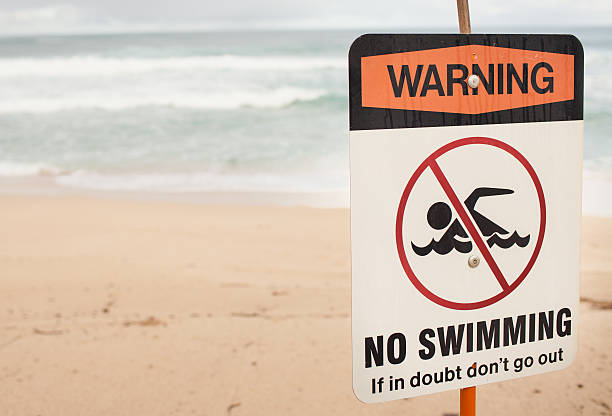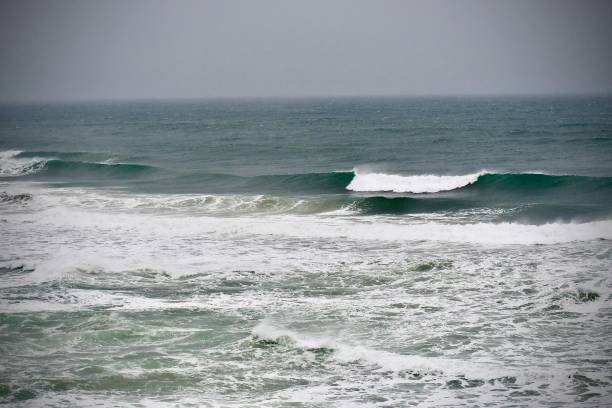Breaking The Grip of Rip Tides: A Swimmer’s Guide to Safety

Breaking the grip of rip tides is essential for swimming safety at the ocean. For swimmers, the ocean offers a vast playground of adventure and tranquility. However, hidden beneath its surface lies a powerful force known as rip tides, which can quickly turn a leisurely swim into a dangerous situation. Understanding how to recognize and respond to rip tides is crucial for ensuring your safety and enjoying the ocean’s beauty without fear.
Understanding Rip Tides
Rip tides, often referred to as rip currents, are strong, narrow currents that flow from the shore out to the sea. They typically form near beaches with breaking waves and can pull swimmers away from the shoreline with surprising speed and force. Recognizing the signs of a rip tide is the first step in staying safe. Look for channels of churning, choppy water, a noticeable difference in water color, or a line of foam, seaweed, or debris moving steadily seaward.
Why are Rip Currents Dangerous?
Rip currents are one of the most hazardous natural phenomena swimmers can encounter in the ocean. Their danger lies in their strength, unpredictability, and ability to swiftly pull even the most experienced swimmers away from the safety of the shore. Here’s why rip currents are particularly perilous:
- Powerful Force: Rip currents can move at speeds of up to 8 feet per second, faster than an Olympic swimmer. This immense power can quickly drag swimmers out to deeper water, creating a sense of disorientation and panic.
- Unpredictability: Rip currents can form suddenly and without warning. They often occur in seemingly calm waters, catching swimmers off guard. This unpredictability makes it difficult to anticipate or avoid them without prior knowledge or observation.
- Misleading Appearance: Rip currents often appear as calm, inviting patches of water between breaking waves, which can lure swimmers into their grip. The deceptive nature of these currents can lead to a false sense of security.
- Exhaustion Risk: Swimmers who attempt to fight against the current by swimming directly back to shore can quickly become exhausted. This exhaustion increases the risk of drowning, as tired swimmers may struggle to stay afloat or signal for help.
- Limited Awareness: Many beachgoers are unaware of rip currents and their dangers, leading to improper responses when caught in one. Lack of education and awareness further amplifies the risk, as individuals may not know how to escape safely.
Understanding the risks associated with rip currents is crucial for swimmer safety. By recognizing their power and knowing how to respond, swimmers can reduce their risk and enjoy the ocean with greater confidence and peace of mind.
Staying Safe: Prevention and Awareness
Understanding and respecting the power of rip tides is crucial for anyone planning to enjoy the ocean. Here are some essential safety tips to help you stay safe:
- Swim at Lifeguarded Beaches: Always choose beaches with lifeguards on duty. They are trained to identify rip currents and can provide immediate assistance if needed.
- Observe Before Entering: Spend a few minutes observing the water before you swim. Look for signs of rip currents, such as channels of churning water, differences in water color, or lines of foam moving out to sea.
- Learn to Identify Rip Currents: Knowing what rip currents look like can help you avoid them. They often appear as narrow, fast-moving belts of water heading offshore.
- Swim with a Buddy: Never swim alone. Having someone with you increases safety and ensures help is nearby if you encounter trouble.
- Stay Calm if Caught: If you find yourself in a rip current, remain calm. Panic can lead to exhaustion.
- Don’t Fight the Current: Instead of trying to swim directly back to shore, swim parallel to the beach. Rip currents are usually narrow, and swimming parallel will help you escape the pull.
- Float and Signal for Help: If you’re unable to escape, float on your back to conserve energy and signal for help by waving your arms and calling out.
- Educate Yourself and Others: Take the time to learn about ocean safety and share this knowledge with family and friends. Awareness is key to prevention.
- Use Beach Safety Flags: Pay attention to beach safety flags and signs. They can provide valuable information about water conditions and potential hazards.
- Stay Informed: Check local beach conditions and weather reports before heading out. This can help you avoid dangerous situations.
What to Do if Caught in a Rip Tide
- Stay Calm: Panic can exacerbate the situation. Focus on staying calm and conserving energy.
- Don’t Fight the Current: Swimming directly against the rip tide will only tire you out. Instead, swim parallel to the shore to escape the narrow current.
- Float and Signal for Help: If you’re unable to swim out of the current, float on your back to conserve energy and signal for help by waving your arms and calling out.
- Swim at an Angle: Once out of the current’s grip, swim diagonally toward the shore. This helps you avoid being pulled back into the rip tide.
How to Help Someone Caught in a Rip Tide
Witnessing someone caught in a rip tide can be a frightening experience, but knowing how to respond can make a significant difference in ensuring their safety. Here are steps to effectively assist someone in distress due to a rip tide:
- Stay Calm and Assess the Situation: Your calmness is crucial. Quickly assess the situation to determine the best course of action without putting yourself in danger.
- Alert a Lifeguard: If a lifeguard is present, notify them immediately. Lifeguards are trained to handle such emergencies and have the necessary equipment to perform a safe rescue.
- Call for Help: If no lifeguard is available, call emergency services. Provide clear information about the location and the situation to ensure a swift response.
- Use a Floatation Device: If you decide to assist, never enter the water without a flotation device. Use a life ring, boogie board, or anything that floats to help the person stay afloat without exhausting themselves.
- Avoid Direct Rescue Attempts: Unless you are a trained professional, avoid swimming out to the person. Rip tides are powerful and can quickly endanger rescuers as well. Instead, focus on providing support from a safe distance.
- Encourage the Victim to Float and Signal: From the shore, shout instructions to the person, encouraging them to remain calm, float on their back, and signal for help by waving their arms.
- Guide Them Parallel to the Shore: If possible, communicate with the person to swim parallel to the shore to escape the narrow current. Once out of the rip tide, they can swim diagonally back to safety.
- Prepare for Their Return: Once the person is out of the rip tide, be ready to assist them as they return to shore. Offer help if they are exhausted or disoriented.
By following these steps, you can provide effective assistance while minimizing risk to yourself. Remember, your safety is also important, and professional help should always be sought when someone is caught in a rip tide.
Facts About Rip Currents
Rip currents are powerful, naturally occurring water channels that pose significant risks to beachgoers. Understanding their characteristics and behavior can help enhance safety and awareness. Here are some key facts about rip currents:
- Speed and Strength: Rip currents can move at speeds of up to 8 feet per second, making them faster than even the strongest swimmers. This speed allows them to quickly pull individuals away from the shore.
- Formation and Location: Rip currents typically form at low spots or breaks in sandbars and near structures like piers and jetties. They are most common in areas with strong onshore winds and significant wave activity.
- Appearance: Rip currents often appear as calm, flat channels of water between breaking waves. This deceptive appearance can mislead swimmers into thinking they are safe areas to swim.
- Width and Length: Most rip currents are narrow, ranging from 10 to 20 feet in width, but they can extend hundreds of feet offshore. Despite their narrow width, they can cover a significant distance out to sea.
- Duration: Rip currents can last for several minutes to hours, depending on wave and tidal conditions. They can appear and disappear quickly, adding to their unpredictability.
- Frequency: Rip currents are responsible for the majority of rescues performed by lifeguards at beaches. They are a leading cause of beach-related incidents, highlighting the importance of awareness and education.
- Global Occurrence: Rip currents are not limited to specific regions; they can occur on any beach with breaking waves, making them a global concern for swimmers and beachgoers.
- Safety Measures: Recognizing the signs of rip currents and knowing how to respond is crucial. Swimming at lifeguarded beaches, understanding local conditions, and having a plan can significantly reduce the risk of incidents.
By familiarizing yourself with these facts about rip currents, you can better prepare for a safe and enjoyable experience at the beach. Knowledge and awareness are key to preventing accidents and ensuring that everyone can enjoy the ocean safely.

Quick Safety Tips
- Know how to swim.
- Never swim alone.
- For maximum safety, swim near a lifeguard.
- Obey all instructions and orders from lifeguards.
- Be cautious at all times.
- Check the weather forecast for local beach conditions.
- If in doubt, don’t go out!
Empowering Yourself with Knowledge
Education is your best defense against rip tides. Take the time to learn about ocean safety, attend local swimming or lifeguard workshops, and share this knowledge with family and friends. By understanding the nature of rip tides and how to respond, you empower yourself and others to enjoy the ocean safely.
Knowledge saves lives
Breaking the grip of rip tides requires awareness, knowledge, and a calm response. By staying informed and prepared, swimmers can confidently navigate the ocean’s challenges and embrace the joy and freedom it offers. Remember, your safety is paramount, and with the right approach, you can enjoy the waves with peace of mind.






Share Your Thoughts